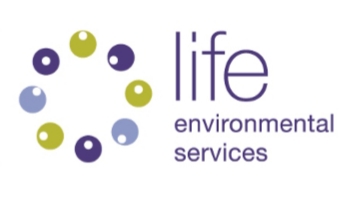Title Page
-
Audit number & description
-
Conducted on
-
Auditee
-
Type of Audit
- Approval / Authorisation
- Annual
- Assessment before approval
- Assessment following non conforming work
- 3 Month follow up
-
Was the audit satisfactory?
-
Auditor
-
Project manager responsible for the works
-
Template revision number and name
Audit Details and Summary
-
This Audit covers
- BAM
- Cat 2
- Cat 3
-
Client
-
Site Address
-
Job no
-
Brief Description of Work/Materials involved
-
Current Level of approval prior to audit
- Not Authorised
- De-authorised
- BAM
- Cat 1
- Cat 2
- Cat 3
-
Current Level of approval following audit
- Not Authorised
- De-authorised
- BAM
- Cat 1
- Cat 2
- Cat 3
Acceptance of findings
-
Auditee
-
Auditor
Pre - Start Health & Safety Assessment
-
Training Files
- P403
- P404
- RSPH Equivelent
- CCP
- Half face fit
- Full face fit
- CSCS
- Asbestos awareness
- Records missing or out of date
-
Experience / Training of analyst
- CV Details the required level of experience
- Training records are present and detail the required level of experience
- CV is missing or doesn't detail required experience
-
Is the Plan of work including the risk assessment (RA) on site and signed off by the PM?
-
Has the desk top study/pre contract review been adequete and the scope of works detailed correctly in the RAMs?
-
Is the RAMS the latest controlled version? please detail
-
Has the PM / Office issued all supporting documents for the works? ie specification , survey reports etc
-
Before start, all limitations accepted and understood, does the analyst fully understand what they are doing?
-
Has the analyst signed the RAMS on arrival?
-
Has the analyst correctly amended the risk assessment where required and if so are the required control measures in place?
-
Are safe access/egress routes available and are they free from trip and fall hazards?
-
If not; is the on site analyst reliant on other contractors for safe access? If so, is this safe and sufficient for the task?
-
Does the analyst have all necessary PPE / RPE and is it suitable and being worn, used correctly?
-
Does the analyst have the appropriate type of RPE on site for the works / length of visual required? visuals >1 hr require break and must leave enclosure
-
Does the analyst have the current Quality Standard Operating Procedure QSOP 01 and guidance documents?
-
Is the on site analyst wearing all appropriate clothing and have identification?
-
Did the analyst conduct themself appropriately on site including interaction with others?
-
Has all generated waste been packaged correctly and removed from site under the current regulations and guidance?
-
RPE complete with ID tag and box for storage present?
-
RPE inspection records complete and up to date?
-
Photograph of mask / masks if required
-
General knowledge about asbestos, asbestos types, health effects, control limits, RPE and mask APF reviewed?
Site Sampling - Air Monitoring Assessment
-
Type of air test witnessed on audit
- Background Testing
- Reassurance Testing
- Leak Testing
- Personal Air Monitoring
- Clearance Testing
-
Has the sample head been loaded correctly?
-
Has the set up and flow of the pump been adequete?
-
Has the analyst taken accurate temperature and pressure readings where air samples have been collected?
-
Has the analyst accurately recorded the air sample details on the paperwork?
-
Was a field blank conducted on the site?
-
Is the lab location suitable i.e. clean, good seating and lighting.?
-
Has lab air test been completed inline with QSOP 01?
-
Is the analysts kit complete in line with the master kit list and calibrated / serviced equipment in date? Please detail or photograph equipment ID no's and cal due dates
-
All in good working order? Check that telescopic masts extend so that the cowl is between 1m-2m during sampling
-
Have regents been checked prior to use and free from contamination? Use torch light to assist with inspection
-
Is microscope set up correctly as described in QSOP 01 / Manufacturers instructions to achieve Kohler illumination? For Euromex scopes is the analyst familiar with setting up the interpupillary distance with regards to the eyepieces?
-
Measured graticule checked by analyst? (Auditor to confirm)
-
Band 5 checked by analyst and visible? (Auditor to confirm)
-
Have slides been cleared and mounted suitably in accordance with our proceedures & HSG 248?
-
Are slides stored correctly in a standard slide box (use of cardboard slide box not acceptable) and information recorded on slide is correct and legible including the slide box sticker? Does the analyst have suitable sized labels and understand that recording details on the glass slide is not acceptable?
-
Aware that slide boxes must be returned to accredited office at the end of each month and not stored on site/car?
-
Is the analyst able to show / demonstrate how to calculate the fibre concentration and LOQ?
-
Does analyst understand how to use and record TWA personal monitoring?
-
General discussion regarding sampling strategies, different types of sampling answered correctly – re: HSG 248 Chapter 5? / current legislation /limits of detection and problem situations
-
Can the analyst explain the WHO counting rules and other potential issues with counting? Discuss in detail dust loading on filters and when a field/sample would be rejected. i.e when more than 1/8th of the graticule field area is occupied by an agglomerate of fibre and/or particles and if the number of rejected fields exceeds 10% of the number accepted.
-
Time taken to count slide suitable?
-
Is the analyst aware that they are ultimately responsible for ensuring that the kit which is in use is in date and fit for purpose
-
Is the analyst up to date on their monthly QCS?
Four Stage Clearance Testing Assessment
-
Analyst asked if the supervisor has undertaken his visual inspection and received a signature to start the clearance process?
Stage 1
-
Witnessed
- Yes
- No
- Observation
-
Has analyst carried out a review of the contractors risk assessment/scope of works and established if it has been complied with - Analyst aware how to proceed if this isn't available?
-
Has the analyst produced an accurate diagram compliant with HSG248 and had it signed by the supervisor?
-
DCU set up as per requirements of HSG247?
-
Waste and transit routes, Waste /DCU areas and surrounding area of enclosure free from obvious asbestos debris and waste?
-
Waste area locked and secure?
-
Enclosure intact and integrity sound with observed negative pressure?
-
Is the NPU intact and running?
-
Inspect airlocks/baglock for all required items and clean? Pre liminary decontamination equipment must be present
-
Viewing of work area through CCTV&VP highlight any issues that require addressing?
Stage 2
-
Witnessed
- Yes
- No
- Observation
-
Have any areas that were not able to be checked at stage 1 been done so before the visual takes place ? ie void seals, check of internal NPS etc
-
Has an initial inspection been performed to check fine clean has been performed and the thorough visual can begin?
-
Has the analyst taken inside the enclosure a torch, mirror and chisel/screwdriver?
-
Has the analyst used the torch at the correct angles to check for settled dust? Holding the torch parallel to surfaces can aid with inspection
-
All fibre retaining materials removed or excluded from visual?
-
Analyst aware not to be undertaking cleaning duties themself?
-
Any suspect ACMs identified and left in good condition/encapsulated depending of material
-
All tools, waste and unnecessary equipment removed from work area?
-
Is there any evidence of sealants/encapsulants which have been used prior to the visual that has not been agreed with either the PM or the client? If so did the analyst correctly identify and know how to proceed?
-
Understands how to proceed with the contractor if they refuse to co-operate whilst undertaking minor remedial works?
-
Analyst carried out visual inspection to a satisfactory standard? Auditor to detail performance in audit report of methodology
Stage 3
-
Witnessed
- Yes
- No
- Observation
-
NPU Pre filter changed and capped?
-
Has the analyst used the correct number of air samples and can they demonstrate how to work out the required sample numbers both m2/m3 ?
-
Distribution of air samples suitable?
-
Was the active disturbance undertaken correctly with pumps running? Location of brushing, time taken and right type of brush used. For enclosures >20m2 surface area was a long handle broom used?
-
Was the flow rate checked and the correct procedure adopted?
-
Aware of no of samples to report >0.01 but <0.015?
Stage 4
-
Witnessed
-
Has the analyst undertaken a reassurance air test during the dismantlement of the enclsoure, if not have they a justified reason?
-
Is the analyst aware that the DCU and a H-Vac should be present until stage 4 is complete?
-
Have any uncovered suspect ACMs that require attention been correctly dealt with?
-
Has the analyst checked the work area and waste & transit routes / areas are free from former enclosure materials, asbestos debris & waste?
-
If all four stages were not witnessed please discuss other elements of the unwitnessed test which must be answered correctly? . New sign offs all 4 stages to be witnessed but compliance audits can be more flexible.
Decontamination Procedures
-
Has the analyst used the DCU and been transiting correctly?
-
Was preliminary and full decontamination of themselfs and equipment adequetely undertaken ? Analyst to use DCU and not wear ANY clothes for stages 2 and 3
DCU Clearance
-
Is the DCU leaving site and therefore require clearance testing? Unless going to near by compound as stated in POW
-
Hygiene facility clearance procedure satisfactory?
-
Analyst completed a hardcopy version of the paperwork? If electronic has the contractor accepted this ?
Paperwork
-
Analyst filled out the paperwork in sequence at each stage as required.
-
Aware how to report a stage fail and repeat a particular stage?
-
Understand / demonstrated how to report all remaining ACM's at stage 2 and 4 and marked up on site drawing?
-
Review of paperwork at QC stage, have any anomolies been identified?
-
Is the analyst using the current versions of air testing paperwork? Review and list version numbers being used i.e LES 01 V1.1 etc
-
Analyst aware how to name project paperwork , send to tracker and who to send the paperwork to as stated in the RAMS, ie client contractor etc









